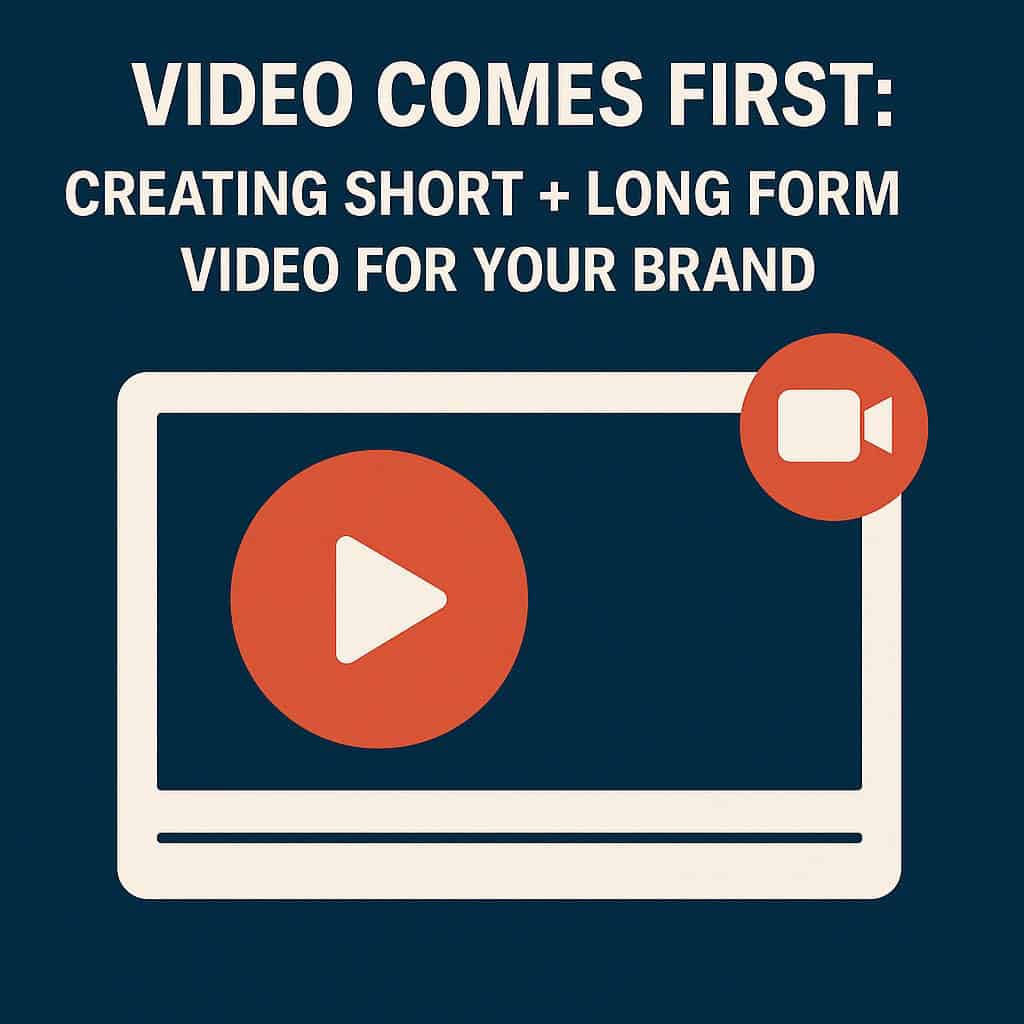Personal branding is more important than ever in today’s digital world. It involves marketing yourself and your career as a brand.
Both short-form and long-form content play crucial roles in this process. Short-form content, like reels and TikTok videos, captures attention quickly.
Long-form content, such as podcasts and YouTube videos, allows for deeper storytelling. Each format has its unique benefits and can enhance your personal brand.
Understanding how to use these content types effectively is key. This guide will explore strategies for leveraging both to build a strong personal brand.
What Is Personal Branding and Why Does It Matter?
Personal branding is about crafting your public persona. It reflects your skills, experiences, and unique value. This strategic practice can impact your career significantly.
In a world where first impressions matter, personal branding sets you apart. It builds credibility and trust with audiences. Audiences connect with authentic, relatable stories.
A well-executed personal brand benefits both individuals and entrepreneurs. It opens doors to opportunities and networking. Your brand is your reputation, shaped by your actions and content.
Here’s why personal branding is essential:
- Increases visibility
- Builds authority
- Enhances career prospects
- Establishes industry recognition
These aspects underscore the importance of personal branding. Developing a strong, consistent brand helps you achieve long-term goals.

Short-Form Content: Quick Wins for Personal Branding
Short-form content is effective for capturing attention quickly. These content types are perfect for audiences with limited time. They encourage fast engagement and wide reach.
Short videos and posts make a significant impact. They are easily shareable, spreading your message rapidly. This format suits the fast-paced nature of today’s digital world.
Platforms like TikTok and Instagram favor short snippets. These platforms thrive on creativity and simplicity. Users love the immediate value they provide.
Consider these short-form content benefits:
- Engages quickly
- Broadens reach
- Promotes creativity
- Facilitates shareability
Creating snappy and engaging content boosts your personal branding. Leverage this format to introduce your brand and grab attention fast.

Platforms for Short-Form Content: Reels, TikTok, Shorts, and More
Different platforms offer diverse ways to showcase short-form content. Instagram Reels, YouTube Shorts, and TikTok are prime examples. Each platform has distinct features and audiences.
Instagram Reels allow creative video editing and viral trends. It’s a powerful tool for visual storytelling. TikTok, a hub for youthful expression, favors trending challenges.
Key platforms for short-form content include:
- Instagram Reels
- TikTok
- YouTube Shorts
- Snapchat Spotlight
Choosing the right platform can amplify your personal brand. Understanding audience preferences helps select the best fit.

by Claudio Schwarz (https://unsplash.com/@purzlbaum)
Long-Form Content: Building Depth and Authority
Long-form content allows for detailed exploration of topics. This format builds a richer connection with your audience. It’s perfect for showcasing expertise and storytelling.
Unlike short snippets, long-form enables comprehensive coverage. It provides more space to dive into complex subjects. This depth fosters authority and credibility.
Such content often involves more time and effort. However, the rewards can be substantial. It encourages audience loyalty and repeat engagement.
Consider integrating these types of long-form content:
- In-depth videos
- Detailed blog posts
- Educational podcasts
Long-form content serves as a foundation for thought leadership. It can position you as an industry expert.
by JAWZ (https://unsplash.com/@theov)
Platforms for Long-Form Content: YouTube, Podcasts, LinkedIn, and Blogs
Different platforms host long-form content effectively. YouTube and podcasts are great for visual and audio depth. They offer comprehensive storytelling opportunities.
LinkedIn and blogs target professional audiences. They’re ideal for sharing insights and articles. Each platform has unique strengths and audience reach.
Key platforms for long-form content include:
- YouTube for video storytelling
- Podcasts for audio narratives
- LinkedIn for professional insights
- Blogs for deep dives and SEO
Choosing the right platform enriches your brand message. Match content type with audience needs for best results.
by Denis N. (https://unsplash.com/@ndcphoto)
Integrating Short and Long Form for a Cohesive Brand Strategy
Combining short and long-form content can amplify your personal brand. Each format plays a distinct role in building your identity. Together, they create a well-rounded presence.
Short-form captures quick attention while long-form dives deep. Utilize both to reach diverse audience preferences. This mixed approach enhances engagement and retention.
Developing a cohesive brand strategy involves seamless integration. Ensure consistent messaging and visual identity across formats. This unity strengthens recognition and impact.
Here are some integration ideas:
- Start with a short video teaser, followed by a detailed blog post.
- Use TikTok for highlights, then expand on YouTube.
- Share quick insights on Instagram and deeper thoughts on LinkedIn.
Aligning both formats maximizes your branding potential. It ensures your message resonates across platforms effectively.
Visual Identity and Personal Branding Photography
Visual identity forms the cornerstone of your personal brand. It involves colors, logos, and style that represent you. Consistent visuals enhance recognition and make your brand memorable.
Personal branding photography is equally crucial. Professional images convey trust and professionalism. They reflect your personality and values authentically.
Key aspects to consider:
- Choose a consistent color palette.
- Use quality photography to build a reliable image.
- Maintain a recognizable style across platforms.
by Bruno Barzalá (https://unsplash.com/@brunobarzala)
Reputation Management and Audience Engagement
Managing your reputation is vital for personal branding success. It involves actively monitoring your public image. Addressing negative feedback promptly can turn challenges into opportunities.
Engagement with your audience fosters a strong community. Respond to comments and messages genuinely. Build trust and loyalty through regular interaction.
Consider these tips:
- Monitor online mentions.
- Respond promptly to feedback.
- Engage regularly with your community.
Measuring Success and Evolving Your Personal Brand
To ensure your personal brand succeeds, regularly assess its impact. Using analytics tools helps track engagement and growth. Reflect on these metrics to refine your strategy.
Adapt your personal brand as you evolve. Careers change, and brands should too. Update your content to reflect new skills and experiences.
Here are some steps for evolving your brand:
- Use analytics for performance insights.
- Regularly update your brand content.
- Align your brand with personal growth.
Each step ensures your brand remains relevant and effective in reaching your goals.





